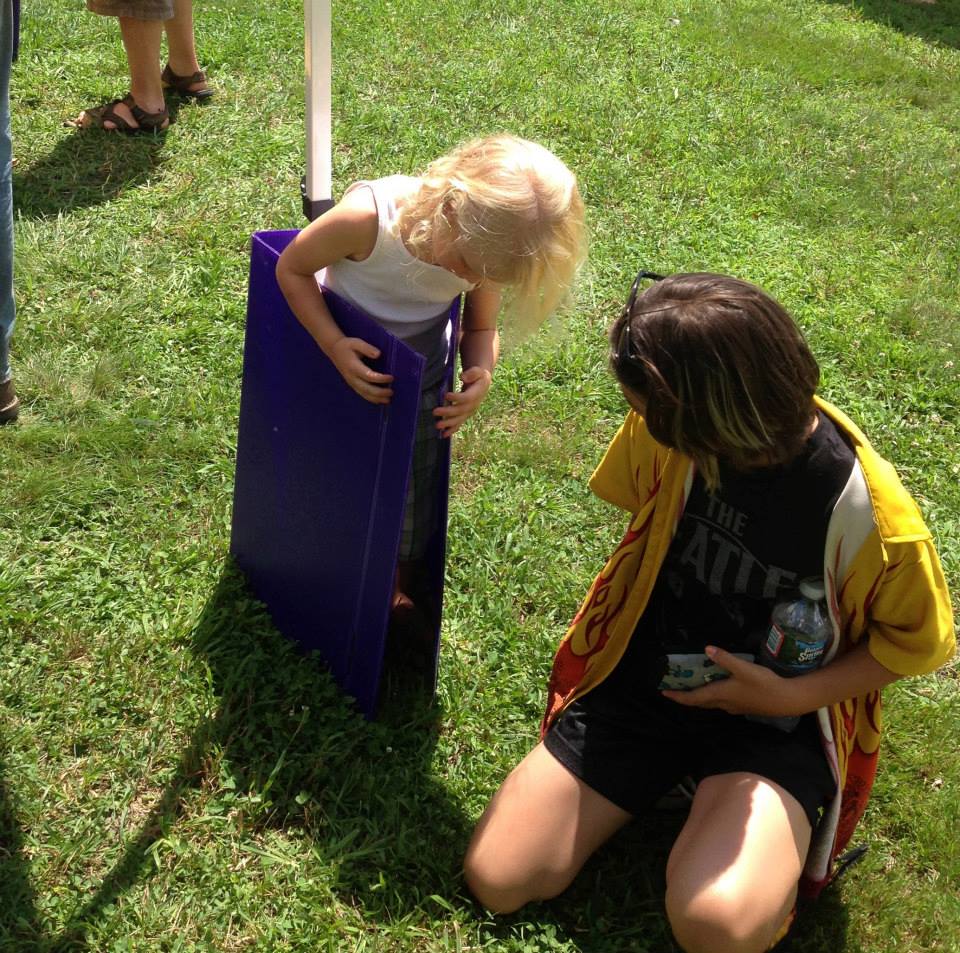What are people asking the DMF summer interns?
By Julia Sullivan
Four events into our summer, Annalena and I have been continually impressed with the great questions we’ve been receiving from festivalgoers and farmers’ market patrons. Our experience last week at the Lenox Farmers’ Market was no exception. Here’s a sampling of four such questions that keep popping up.
What’s the bug that’s killing hemlocks?
One pest that seems to be on a lot of people’s minds is the hemlock woolly adelgid. It was first reported in the 1920s and is currently distributed throughout the Eastern United States. Efforts to eradicate the hemlock woolly adelgid are currently under way via: biological control; lethal control using both chemical insecticides and, more recently, biocides; breeding resistant trees; managing the site to adapt to the loss of hemlocks. The fact that the insect continues to spread and hemlocks remain under threat, however, illustrates the great difficulty often encountered in responding to such invasions.
Is it okay to buy firewood at the grocery store?
Sometimes! This can be a really good option for some people, but only when it’s done right. If you see bundles of firewood at the supermarket from an unknown source, be wary. Do not buy firewood from an unpermitted or unknown vendor that cannot tell you where their wood comes from. Buying wood that is labeled as heat-treated or kiln dried (to kill any pests within), however, is typically safe. And buying wood that is clearly labeled as being from the local area, if you are planning to use it locally, is also usually fine.
Doesn’t the Asian longhorned beetle have predators that keep it in check?
In its native areas (China and Korea), yes! Here, not so much. Native trees have defenses against the insects and diseases that they've been living and evolving with for millions of years – not ones introduced from the other side of the world. Likewise, native predators eat native insects, and that keeps their populations in check. Invasive non-native insects and diseases have no effective predators in their new homes, and the trees have no natural defenses against them, allowing insects like the Asian longhorned beetle to reproduce rapidly and threaten the stability of the ecosystem. While native woodpeckers and other predators eat some Asian longhorned beetles, it is not nearly enough to keep their populations in check.
What are all those purple boxes?
The purple traps you might see suspended in trees are special boxes designed to attract the emerald ash borer. The triangular boxes release a scent similar to a sick ash tree, and the purple color is attractive to the beetle. They are intended to be monitoring devices that indicate the presence of beetles in a given area.
NOTE: We have special non-sticky ones to show people at our booth. DO NOT touch the real ones you may see in trees- they are covered in seriously sticky adhesive that is very difficult to remove.




